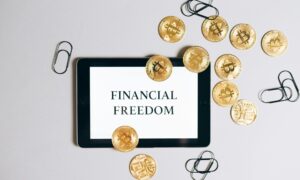Today, digital payment is in throes of significant change as a result of several factors. Firstly, when making payments, today’s consumer prefers an omni-channel solution, security as well as value added services that offer more than just convenience. On their part, merchants are keen on lower cost payments in addition to easy integration with value-added applications. To address these customer preferences, 78 percent of the traditional financial institutions are seeking partnerships with fintech firms in an attempt to offer fintech payment services. Here are some features that make fintech payment sector distinct from traditional payment.
Fintech payment is instant
Instant payment is also referred to as real-time or immediate payment. Real-time payments are cleared almost immediately regardless of the settlement or clearing arrangements. The payment instrument used does not affect the speed either. According to the recommendations of Euro Retail Payments Board, the European Payment Council is expected to develop and implement an instant payment scheme in Eurozone by November 2017. This technology will ultimately spread to many other parts of the world.
Fintech payment is invisible
Invisible payments are a result of financial technology and involve the consumer of goods or services paying in digital form. There is no time at which money changes hands, no swiping of a card either. Uber tax payment is a perfect example of how invisible payment works. Amazon Go is another example of digital payments in action. You just need to have the amazon app that allows you entry into the store, pick what you want and walk out. No queuing or checkups. Amazon will send you a receipt shortly after.
Fintech allows subscription mode of payment
Unlike in the traditional method of payment, fintech allows you to pay by subscription. In the music industry, for example, many people prefer paying by subscription as opposed to paying for each album. The model is known as pay-as-you-go and offers excellent customer experience.
Fintech payments can be done anywhere anytime
The fintech sector has witnessed the development of the mobile and internet payments. Internet payment only requires you to have access to the web, it may be through a smartphone or a PC. Companies that allow internet payments will usually have a website where you simply login in and make the payment that you need. An example is PayPal. It does not matter the place or time; all you need is access to the internet. On its part, mobile payment is done by use of an app on your smartphone. Just like in internet payments, you can pay bills at any time and in any place so long as you have money in your account. Sometimes, you do not even need an app where you have a sim card registered to offer mobile money transfer services.
Fintech payment is secure
Fintech payments especially the blockchain technology has a feature that tracks the transactions. The system records all data and shares it with all the parties involved in the particular transaction. This makes it hard for fraudsters because the tracked transactions provide evidence of the transactions that took place.
Indeed, fintech is revolutionizing payments in ways that have never been anticipated.

































